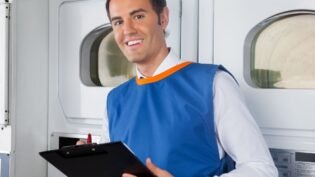
If your small business relies on delivering products to customers, you might be considering the move towards an in-house delivery service. While third-party delivery services can be convenient, they often come with their own set of limitations, such as lack of control over delivery times or pricing.
In this guide, we’ll explore the benefits and challenges of managing your own delivery service, and provide tips for making the transition as smooth as possible.
The Benefits of In-House Delivery Services
Running your own delivery service can offer many advantages, such as:
- Increased control over delivery times and routes
- The ability to offer same-day or next-day delivery
- The opportunity to establish a personal connection with customers
- Greater control over pricing and delivery fees
- The ability to handle delivery complaints and issues in-house
Overall, the companies that move to an in-house delivery system are doing so in order to ensure that they have the final say in how their deliveries are handled – and to have financial control over this process, avoiding the “convenience mark-up” that third parties will add to the cost.
Challenges of In-House Delivery Services
While there are many benefits to having your own delivery service, there are also some challenges to be aware of. These can include:
- Higher upfront costs for vehicles, fuel, and insurance
- The need to manage a fleet of vehicles and drivers
- The need to ensure regulatory compliance, such as regular fleet inspections
- The possibility of increased liability in case of accidents or injuries
These challenges need to be balanced against the benefits. If you are looking to move to an in-house system, can you afford to make the financial outlay up front, knowing that you’ll be paying less in future? There will also be more work created by the need to keep the fleet in good condition and working order. Your greater control over the process does mean you have more options in how this is achieved, of course.
Making the Transition
Whether you’re starting a new delivery service or scaling up an existing one, there are a few key steps you’ll need to take to make the transition as smooth as possible:
- Establish clear delivery policies and procedures, such as delivery times, pricing, and customer communication
- Invest in reliable vehicles and ensure they undergo regular fleet inspections
- Hire qualified and reliable drivers and provide them with proper training
- Ensure regulatory compliance, such as obtaining necessary licenses and permits
- Develop a plan for handling delivery issues and complaints
If you already have an in-house delivery service and are looking to scale it up, many of these questions still apply. When you move to delivering higher volumes, more technically specific deliveries such as temperature-sensitive goods, or making more deliveries, there can be changes in regulatory responsibilities and in terms of wear and tear on the vehicles used, so your operation will need to move with that development.
In conclusion, managing your own delivery service can offer many benefits for small businesses, including greater control over delivery times and pricing, and the opportunity to establish personal connections with customers. While there are certainly challenges involved, such as regulatory compliance and fleet inspections, with proper planning and preparation, it can be a rewarding and profitable venture.
1658 Views













